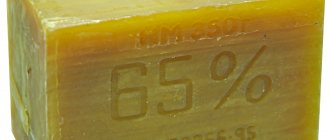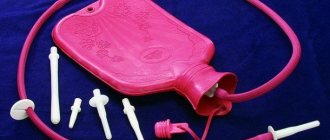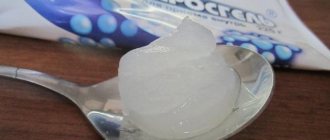Is it possible to do an enema often: limitations and possible consequences
In medical practice, the use of cleansing procedures is often necessary. These manipulations are considered harmless and painless. But is everything so simple in this matter - are there any contraindications, how often can an enema be given to an adult, a child or a pregnant woman.
The frequency of washing is determined by the doctor in accordance with the diagnosis. At the same time, experts recommend carrying out the procedure systematically. You can cleanse the body in case of problems with bowel movements or poisoning.
It is recommended for an adult to cleanse no more than 1-2 times a month if there are problems with stool.
For children
An enema is given to a child only after consultation with a doctor. First, the pediatrician must make sure that the abdominal pain is associated with bowel movements and not with appendicitis. For children, manipulation is carried out when problems with stool occur.
Newborns and infants
Newborns suffer from constipation due to imperfections in the digestive system. Their gastrointestinal tract is not yet populated with beneficial bacteria that help digest food.
This problem may accompany the baby until the introduction of the first complementary foods.
In the first months of a baby’s life, a rinsing agent is administered only if absolutely necessary, if there is no stool for more than 3 days. If the problem remains, the enema is repeated only after consultation with the attending physician.
The functioning of the gastrointestinal tract of a newborn should be adjusted with special exercises or medical microenemas designed for infants.
Frequency of enemas
In special cases, for example, pregnant, elderly or bedridden patients, cleaning is advisable under the supervision of a physician and as prescribed. The frequency and frequency are determined by the attending physician.
During pregnancy
During pregnancy, problems with bowel movements become especially important. The enlarged uterus puts pressure on the pelvic organs, which leads to prolonged constipation, intoxication of the body and the threat of pregnancy failure. However, using an enema in the first trimester is strictly prohibited.
Stimulation of peristalsis at the beginning of pregnancy provokes the following disorders:
- colitis;
- uterine tone;
- low placentation;
- threat of miscarriage.
After 36 weeks, an enema can be given after consultation with a doctor. If there are no contraindications, cleansing is carried out once a week.
Elderly people and bedridden patients
In this group of patients, atony of the intestinal wall occurs, which leads to chronic problems with stool. In this case, a special diet, drinking plenty of fluids and taking laxatives are prescribed.
Sometimes such measures are ineffective. In this case, an enema is prescribed for constipation.
As prescribed by the doctor, manipulation is performed once a week, if there are no other gastrointestinal diseases . If the expected benefit from cleansing exceeds the harm, then the enema is used once every 3 days.
Using an enema at home
Clyster is used in the following cases:
- bloating;
- difficult stool;
- Irregular bowel movements (change from constipation to diarrhea).
Before cleansing at home, you need to switch to a plant-based diet and drink as much water as possible for a few days.
Contraindications:
- increased body temperature;
- nausea;
- chronic gastrointestinal diseases;
- diabetes.
It is useful to cleanse early in the morning before 7 o'clock. It is necessary to administer the enema lying on your side, pressing your knees towards you. Esmarch's mug is filled with warm boiled water and suspended to a height of 1.5 meters.
The tip is lubricated with Vaseline and inserted into the anus, but it is necessary to open the tap on the container. This is how fluid is introduced into the intestines.
Preventive cleansing procedure
In order not to cause harm to the body for preventive purposes, an enema can be given up to twice a month. In this case, instead of boiled water, chamomile decoction is used. Such a washing agent will have an analgesic and antiseptic effect, and relieve excessive gas formation.
Pharmaceutical chamomile (2 tbsp) is brewed with 250 ml of boiling water and left for 15 minutes. Then filter and mix with boiled water.
Preventive cleansing operations will rid the body of toxins and improve the performance of all its systems.
Cleansing enema
Washing agents can be used for the purpose of losing weight during a diet or for constipation, which are interconnected.
A sharp decrease in the amount of food consumed can lead to problems with bowel movements, in which case the body needs help. In any case, doctors do not recommend cleaning more than twice a month.
For weight loss
Clyster is a popular method of cleansing the body when losing weight. When using it, you must remember that frequent enemas without consulting a doctor lead to obesity, and weight loss will not occur.
The large intestine will get used to constant stimulation and without it it will become problematic to have a bowel movement.
Cleansing liquid is administered in a volume of at least 500 ml. For this purpose, an Esmarch mug is used, not a pear. During the period of weight loss, you can do up to 5 cleansing procedures every other day for a month.
The next course can be repeated after 3 months.
For constipation
A cleansing enema after prolonged constipation can reduce the intoxication of the body with decay products. A person gets rid of the feeling of heaviness, discomfort, and spasms. For emptying, the procedure can be carried out no more than 2 times a month.
Frequent manipulations lead to disruption of the functioning of the digestive organs, difficulty in absorbing water and nutrients.
Water enema
The liquid, acting on the rectum, washes away its microflora. This can be compared to long-term use of antibiotics, which kills all bacteria involved in the digestion process. In the case of water, the microflora is washed away mechanically.
Also, frequent cleanings lead to impaired absorption of liquid. Only a doctor can decide how often to perform such a manipulation. The procedure is usually prescribed no more than once a month.
Harm and complications from frequent use of enemas
The apparent simplicity and usefulness of this manipulation is fraught with many dangers. Doctors are generally against the uncontrolled use of this method of emptying.
Due to constant washing, the following complications may develop:
- Lazy gut syndrome. Without outside influence, the rectum simply ceases to perform its functions of “evacuating” feces to the outside. This leads to chronic, painful constipation. As a result, a person will be able to have a bowel movement only with the help of an enema.
- Dysbacteriosis. The liquid entering the rectum washes away all bacteria, including beneficial ones, and the intestinal microflora is disrupted. In this case, chronic diarrhea, metabolic disorders, and deficiency of vitamins and microelements may develop.
- Intoxication of the body. Harmful substances from stagnant feces under the influence of liquid can be absorbed into the walls of the colon.
Any medical procedure must be approached responsibly. Abuse of this kind of manipulation can cause irreparable harm to the body .
Conclusion
Any health problem, even something as delicate as constipation, should be addressed by your doctor. According to his recommendations, it is possible to carry out cleansing procedures for the purpose of improving health or losing weight, and only he can decide whether this is harmful.
Self-medication is fraught with the development of new chronic diseases, and the consequences can be irreversible.
Source: https://vseozhivote.ru/kishechnik/kak-chasto-mozhno-delat-klizmu.html
Doctor's opinion
Up
Andrey Evgenievich, Kharkov, general practitioner: I recently registered a patient who had driven herself to exhaustion with grueling diets and daily enemas. Result: broken stools, dehydration and compromised immunity. We worked on her recovery for about six months. It’s too early to put an end to this, since she never returned to normal life. Pain and weakness became her companions throughout life. Therefore, if I hear that you can irrigate daily, I want to prosecute such a person. No pear or Esmarch mug will increase your health or improve your condition if the procedure is frequent.
How often can an adult have an enema, is it beneficial or harmful?
Every person who experiences difficulty with defecation from time to time asks the question: how often can an adult have an enema, is such an effective “first aid” method useful or harmful? After all, with the help of an enema you can really quickly cleanse the intestines and get rid of constipation, but this is not the only problem that this procedure can help cope with.
When is an enema used?
Before answering the question whether doing an enema at home is harmful or useful, and how many times the procedure can be repeated, you should understand when the enema procedure is appropriate and when it is not. Enema is used as an official medical method and as a folk method for the following problems in the functioning of the human body:
- For constipation and intestinal obstruction;
- In case of poisoning and intoxication;
- Before childbirth;
- If you need to administer medications into the rectum.
Types of enema
Depending on what problem needs to be solved, enema is divided into several types:
- Cleansing enema, cool enema (water temperature should not exceed 20 degrees plus);
- Normal enema (this includes a temperature of up to 36 degrees with a plus sign);
- Hot enema (temperature over 42 degrees with a plus sign).
A person can do an enema on his own only if he suffers from constipation or intoxication of the body; other cases when an enema needs to be done require the intervention of a specialist and strict supervision.
If a person requires a hot enema, it is best to do it in a hospital. The fact is that during a hot enema, spasms in the intestines can occur, as well as other complications in the functioning of the whole body, and most often, it is extremely difficult to eliminate these consequences at home.
The decision on how often to do an enema to cleanse the intestines is best made with your doctor, since every body is different. The doctor will help determine how critical the patient’s health situation is and will also take into account individual characteristics.
If a diagnosis of “lazy” bowel has been made, then an enema can be given once, and further treatment involves, first of all, correction of diet and lifestyle.
How to use an enema correctly and how often you can do it
At first glance, it may seem that an enema is a harmless procedure and simply a salvation for constipation and other problems. It is this kind of carelessness that leads to unpleasant consequences. An enema affects the intestinal microflora, which means it should be used only in critical situations, and should be taken with full responsibility.
Doctors strongly recommend using an enema (again, if necessary) no more than twice a month. If the situation is special, then you can deviate from these recommendations and repeat the enema once every three days. But it is strictly forbidden to do an enema every day.
If you neglect the frequency of use, the possible harm to the body will be as follows:
- Beneficial microflora will be washed out of the intestines;
- Due to mechanical impact, damage to the mucous membrane can be caused;
- Due to the constant release of fluid, dehydration may occur;
- The ability of the intestines to absorb nutrients will be impaired;
- Due to the fact that the enema provides easy bowel movements, addiction may occur, and it will be difficult to go to the toilet on your own.
Using an enema every day may only be appropriate if the frequency of the procedure has been prescribed by your doctor. In other situations, it is necessary to take a break between procedures for at least a day.
Rules for home use of enema
If you give an enema at home, then you should only blame yourself, since all responsibility for the result rests on the shoulders of the patient himself. In order to prevent a large number of possible mistakes, and to avoid them altogether, you must be guided by all the recommendations listed below:
- Absolutely strictly observe the temperature regime of the water. You can do hot or cold enemas only as prescribed by your doctor.
- For an enema, use only clean water; if this is not available, then you must boil the water.
- To maintain the acidic environment of the intestines, add lemon juice or fruit vinegar to the enema.
- Recommendations regarding water volumes should be strictly followed. If you exceed the recommended volumes, you can stretch the intestinal walls. For an adult, it is allowed to use no more than two liters of water.
- To avoid injury, the enema tip must be inserted smoothly, without pressure or force, and always in the correct position.
- You cannot do an enema if you have gastrointestinal cancer, hemorrhoids, internal bleeding, or inflammation of the large intestine.
Any person who needs an enema should take these recommendations into account and strictly follow them, and also take into account the permitted frequency of the procedure.
Before you immediately rush to do an enema, you should find out the cause of constipation. Constipation can be caused by insufficient nutrition, fluid deficiency, and intestinal spasms. There are many approaches to addressing any given cause, so it is best to consult your doctor before using an enema.
Source: https://protoxin.ru/ochishenie/kishechnik/klizma-dlya-vzroslogo-cheloveka-chastota-ispolzovaniya.html
Recipes based on natural oils
For an enhanced effect, you can make special solutions at home that are designed to quickly relieve constipation. An oil enema is prepared based on the following components:
- Castor oil base: 20 ml castor oil per 800 ml warm water. Do 150–200 ml at a time.
- Olive oil base: 80 ml olive oil per 500 ml warm water. Use 150–200 ml at a time.
- Flaxseed oil base: 150 ml of warm linseed oil per 500 ml of cool water. Do 150–200 ml at a time.
- Combined oil base: 30 ml of petroleum jelly, 30 ml of glycerin, 30 ml of enema soap, 60 ml of olive oil - dissolve everything in 400 ml of warm water. Do enemas with this solution several times during the day.
Natural oils have a healing effect, relieve inflammation and promote restoration of the mucous membrane. Such remedies help relieve constipation without harm to the body.
Oils added to the enema solution will help relieve constipation.
Before carrying out the cleaning procedure, it is recommended to prepare a fresh solution. It is better not to use more components than recommended in the recipe. This may cause irritation or an allergic reaction.
How often can you do cleansing enemas?
A cleansing enema is performed to eliminate toxic and other harmful substances from the large intestine, including those caused by intoxication or poisoning. When compared with a medical procedure, cleansing involves complete leaching of the injected solution from the intestine, the absorption of which is undesirable.
In what cases is it necessary to cleanse with an enema?
Cleansing is indicated for constipation, before intestinal surgery and childbirth. The need for the procedure is associated with food poisoning and intoxication. An enema is often given to prepare for an x-ray examination, before a drug procedure.
Cleansing the body helps eliminate toxins and toxic substances that accumulate due to poor nutrition or the development of specific diseases (exacerbation of various pathological processes occurs). When is it recommended to perform cleansing enemas:
- flatulence;
- problems with bowel movements;
- fatigue, chronic weakness;
- amber from the oral cavity;
- pain in the joints;
- liver pain;
- frequent colds;
- rashes on the skin.
Important! Cleansing procedures are carried out during the course and in the preparatory period before losing weight.
The method is contraindicated in the following cases:
- development of an acute inflammatory process in the large intestine, including in the presence of erosive and ulcerative changes in the mucous membrane;
- bleeding in the stomach;
- inguinal hernia or abdominal hernia;
- exacerbation of chronic pathology in the intestines;
- acute stage of hemorrhoids;
- neoplasm in the colon;
- bowel prolapse;
- heart and vascular diseases.
If cleansing is necessary before the procedure, it is recommended to visit a doctor who will rule out possible contraindications.
For adults
How often can an adult have an enema: the frequency of cleansing manipulation for men and women is no more than 2-3 times every 30 days, preferably even less often. For older people, the frequency of cleansing enema is up to 3 times a month.
Pregnant
How often you can do an enema during pregnancy and the need for the procedure will be determined only by your doctor. The possibility of early cleansing is permissible only if the potential benefit outweighs the possible harm to the mother and fetus.
One of the indications for an enema in the 1st trimester is systematic constipation. Other methods of treating the condition should be ineffective, the general condition should not be impaired, there should be no pain symptoms from the intestines, pathological discharge, or the threat of premature and spontaneous termination of pregnancy.
How often can you give enemas in the 2nd trimester: cleansing is carried out no more than once a week. In the last trimester, the procedure is allowed after 36 weeks.
What happens if you abuse it?
If you follow the rules of the procedure, you can eliminate the risk of developing negative consequences:
- insertion of the enema tip must be carried out carefully in order to avoid injury to the mucous membranes and pain;
- It is not recommended to carry out cleansing more often than the period determined by the doctor, otherwise the intestinal microflora and the activity of the excretory system are disrupted;
- It is harmful to give enemas despite contraindications - otherwise the development of side symptoms cannot be avoided.
Consequences of frequent enemas when the procedure is abused:
- Development of a “lazy gut”. Intestinal peristalsis is weakened due to excessive mechanical stimulation of the walls of the large intestine with liquid. The situation contributes to the development of chronic constipation.
- Disturbance of intestinal microflora. Frequent cleansing procedures contribute to the leaching of beneficial microflora from the intestinal environment and cause disturbances (diarrhea, constipation).
- Intoxication. A negative consequence develops against the background of the dissolution of food decomposition products in the liquid that is introduced into the intestinal cavity.
Note! To prevent negative reactions, it is important to observe the temperature of the injected solution: for atonic constipation - 12-20 °C, for spastic constipation - 37-38 °C.
Rules for the procedure
Esmarch's red mug with white pipe
To perform a bowel cleansing procedure, you need to purchase a device that consists of the following elements:
- Esmarch's mug is a vessel made of glass, rubber or metal with a capacity of up to 2 liters;
- a thick-walled rubber tube with a diameter of 1 cm and a length of 1.5 m, which connects to Esmarch’s mug;
- a tube that connects the heating pad to the tap to regulate the flow of liquid;
- tip made of glass, ebonite or rubber.
The procedure is carried out using 1–2 liters of warm water. How to give an enema at home:
- Before administering an enema, you need to disinfect your hands with soap and wear gloves.
- Pour the prepared water into Esmarch's mug.
- Hang the bowl on a tripod higher than a meter above the person.
- Open the tap to fill the tubes.
- Place a diaper under the pelvis and lay the patient on his side. The legs should be bent to the chest at the knee joints, and the pelvis should be moved back slightly.
- Lubricate the tip with lubricant and carefully insert it into the anal.
- Open the tap a little and release liquid under low pressure.
- When the water runs out, remove the tube and disinfect the tip.
- The patient must hold the liquid in the intestines for 5–10 minutes by squeezing the anal sphincter.
Important! Instead of warm water, you can use infusions and decoctions of medicinal herbs (chamomile, calendula, yarrow, string), which have a mild anti-inflammatory, antiseptic, and disinfectant effect.
Despite the benefits of cleansing the body with an enema, you should not abuse the procedure, even to lose weight. It is better to visit a doctor to exclude contraindications and determine the frequency of cleaning sessions.
Pulmonologist, Therapist, Cardiologist, Functional Diagnostics Doctor. Doctor of the highest category. Work experience: 9 years. Graduated from Khabarovsk State Medical Institute, clinical residency in therapy. I am engaged in the diagnosis, treatment and prevention of diseases of internal organs, and also conduct medical examinations. I treat diseases of the respiratory system, gastrointestinal tract, and cardiovascular system. Bespalova Irina Leonidovna published articles: 499
Source: https://ObOtravlenii.ru/detoksikatsiya/kak-chasto-mozhno-delat-klizmu.html
You can’t go anywhere without water: the simplest treatment option
To use an enema for constipation, it is not at all necessary to come up with an unusual medicinal solution. For uncomplicated constipation, regular rinsing with water is sufficient. So, for example, if you give a large enema (over 500 ml) with warm water (22–23 degrees), it will stimulate the lower intestines. If constipation is formed in this part, then intensive excretion of dissolved feces will occur.
To reflexively stimulate peristalsis in the middle sections of the intestine, medium enemas with cold water are done. You need to be careful with this method of treatment at home, since this procedure is contraindicated for spastic constipation (caused by spasms). They are also prohibited from doing during inflammatory processes.
If a person suffers from dyskinetic (neurogenic) constipation, then microenemas can be done with water heated to 35–36 degrees. Procedures with large volumes of water at this temperature cannot be carried out, as this can cause excessive dilation of intestinal vessels.
Enema for an adult: frequency of use. How often can an adult have an enema?
Before answering the question whether doing an enema at home is harmful or useful, and how many times the procedure can be repeated, you should understand when the enema procedure is appropriate and when it is not. Enema is used as an official medical method and as a folk method for the following problems in the functioning of the human body:
- For constipation and intestinal obstruction;
- In case of poisoning and intoxication;
- Before childbirth;
- If you need to administer medications into the rectum.
Recipes for cleansing enemas from parasites
Certain substances in the composition of the medicinal solution are selected depending on the type of parasite that caused the disease. Thus, in case of infection with round and tape helminths, as well as protozoa and flukes, microenemas with garlic, solutions with tansy, soda or onions are recommended, which are prepared according to the following recipes:
- You will need a medium sized garlic head. It needs to be cleaned and crushed, and then placed in a glass container. This amount of garlic is poured with boiling water (0.6 l), wrapped and infused for 12 hours. After filtering, the medicine is ready. For the procedure, you will need a pear-shaped bottle into which 50 ml of product is taken. The air is first released from it. After this, having treated the tip of the can with Vaseline, it is inserted into the anus and the medicinal solution is injected into the rectum. The medicine is kept inside for a couple of minutes, after which you can empty your bowels. This enema is done every day for a week.
Important: garlic enemas are not recommended for children under three years of age.
- A milder garlic medicine for parasites, which can even be used to treat children, is prepared according to the following recipe. Six garlic cloves are poured with water (0.1 l) and brought to a boil over heat. The broth should be cooled to a temperature of 37-38°C. After this, it can be used immediately. Since the solution is warm, it should stay in the intestines as long as possible. It is advisable to immediately take a horizontal position after the procedure, this will delay the process of defecation as much as possible. It is best to use this product at night. The procedure is repeated for two weeks. Then they pause treatment for 14 days and repeat the two-week course of treatment again. In all cases, the broth should be warm.
- Garlic and onion infusion is considered the most effective anthelmintic. To prepare you need 3-4 cloves of garlic. They need to be crushed. Add chopped onion in the same volume. Pour boiling water (0.05 l) over everything. After a quarter of an hour, filter the infusion and squeeze out the cake. Add 10-15 ml of lemon juice to the medicine. Dissolve the prepared product in a liter of water. Duration of therapy is one week.
Attention! In the recipe for onion-garlic infusion, it is forbidden to replace lemon juice with citric acid.
- If a person does not tolerate onions and garlic, then you can prepare a remedy based on tansy. For this you will need 20 g of flowers of this plant. They are poured with boiling water (0.2 l) and allowed to brew for half an hour. The product is filtered. The broth must cool to a temperature of 39 degrees, only then can it be introduced into the intestine. They try to keep the medicinal infusion in the intestines for several minutes.
- Soda enemas are highly valued for their cleansing effects. For a glass of water you will need ½ tsp. soda Adults are given an enema in a volume of half a liter, and for children the volume is determined based on their age. The temperature of the product before administration should be around 38 degrees. You need to keep the decoction in the intestines for at least half an hour. Duration of treatment is a week. After a two-week break, the course is repeated.
Source: https://pro-acne.ru/zheludok/kak-chasto-mozhno-delat-klizmu-vzroslomu-polezno-eto-ili-vredno.html
Rules for the procedure
When choosing this method of treating a parasitic disease, it is important to consider not only how often an enema can be done, but also the general rules for carrying out this procedure. So, before performing therapeutic lavage of the intestines, it is necessary to cleanse it of waste products. To do this, they give a cleansing enema, adhering to the following recommendations:
- It is necessary to prepare two liters of boiled and settled water in advance. She should be cold.
- We collect all the water in the container. It is advisable to take not an ordinary pear-shaped enema, but a rubber heating pad, to which is attached a rubber tube with a tip for insertion into the anus. This tip must be lubricated with vegetable oil or petroleum jelly to facilitate insertion.
- The patient must kneel and lean on his elbows, after which part of the tip is inserted into the anus and the procedure is performed.
- The entire volume of water must not be administered at once, but in four doses of half a liter. After each dose, the patient must have a bowel movement.
Only when the intestines are completely cleared of waste products can therapeutic procedures be performed with products that are prepared according to the recipes described below. After administering the drug, it is necessary to squeeze the sphincter muscles and try to delay the emptying process for 7-10 minutes. During this time, the medicine will have time to act on the parasites and destroy them.
Drugs for the treatment of tapeworms in humans
How often can you do an enema, what are the benefits and harms of the procedure?
All toxins and harmful substances accumulate in the human body in the intestines. There can be a lot of them, up to several kilograms, which can poison the body from the inside.
To eliminate problems, you can use cleansing enemas, but you need to know why an enema is useful, how to do it and how often you can use the procedure.
What do we know about enemas?
The same word - enema - refers to both the procedure for cleaning the intestines and the medical instrument with which this same cleansing is performed.
Using an instrument of the same name, a certain amount of liquid (from 100 ml to 2 liters) is injected into the large intestine, which is determined individually depending on the purpose of the procedure. After the introduction of liquid, the intestines are completely emptied, due to which they are cleansed and get rid of toxins.
How often enemas can be done is determined by the doctor individually for each patient. But without special indications, the procedure can be carried out independently no more than twice a month.
Recommendations before conducting
An enema can be harmful if used incorrectly, uncontrollably and for other purposes. Any such procedures must be carried out consciously, knowing what problems exist in the body.
Ideally, initially undergo a diagnosis and consult with a doctor to determine whether it is useful to give an enema in a particular case, whether there is a need for it.
The doctor can tell you how often and correctly to perform the procedure, and can also point out possible contraindications and side effects.
Before doing an enema, it is recommended to study in detail the possible materials, methods and techniques. To do this, you can use introductory videos and other materials. During the procedure, you will need to listen to the body; if pain and other types of discomfort appear, the procedure will stop.
There is no need to try to introduce the maximum amount of liquid for cleansing with one procedure.
In this case, the likelihood of sharp pain increases significantly, since the condition is unusual for the body. The whole process should be slow and careful.
What types of enemas are there?
At first glance, the same colon cleansing procedure can achieve completely different goals. The technology and features of performing an enema also depend on this.
The most commonly used types of procedures are:
- Cleansing enema. This type of procedure is used for chronic constipation, as well as for urgent bowel cleansing, for example, before surgery or examination of the gastrointestinal tract. It is this type of enema that is used in cases of poisoning for the purpose of detoxification, as well as those who want to lose weight. A cleansing enema is carried out with boiled water, the temperature of which ranges from 25 to 27 degrees. The volume of infused liquid can vary from 1 to 2 liters.
- Hot enema. A distinctive feature of this procedure is the temperature of the infused liquid. It significantly exceeds body temperature and can reach a maximum of 42 degrees. A similar procedure can be prescribed for spastic constipation, and it is best to carry it out under the supervision of a medical professional.
- Cold enema. This type of procedure is aimed at activating intestinal function and is prescribed for atonic constipation. The temperature of the water for the enema in this case ranges from 15 to 20 degrees.
What type of procedure is necessary and with what frequency it should be performed can only be determined by the attending physician after examining the patient.
Nuances in treatment with enemas
The rules for administering enemas require taking into account the properties of the solution introduced inside in terms of temperature and quantity. Using these factors, you can create the desired effect:
- Normal (room) temperature is considered to be 18-25 degrees Celsius. It is followed when it is necessary to cleanse the child’s intestines.
- A solution from 0 to +18 degrees is considered cold. It is used for feverish conditions, intestinal atony in old age.
- By raising the temperature to + 40 degrees, spasm of the muscles of the intestinal wall is eliminated, pain is relieved, and the contents are liquefied. Used for rapid absorption of microenemas.
- Hot solutions up to 45 degrees are used in the treatment of attacks of urolithiasis during urinary retention, to warm the prostate of male patients in urology.
Depending on the volume of injected solution:
- emptying causes 1.5-2 liters in an adult, 25-130 ml in an infant up to 12 months;
- microenemas should not contain more than 100 ml; the solution must be completely absorbed;
- for the siphon method, repeated injections of up to 2 liters of water are used under pressure (in sanatoriums - mineral water) with the release of the contents by gravity, up to 20 liters are consumed per session.
Important! Siphon basics are used in colon hydrotherapy. The flow of liquid occurs in spurts. The action provides a massage effect. The procedure is carried out in sanatorium conditions, in specialized medical institutions.
After 40 minutes of rinsing, one cannot hope for complete release of water. Remarks that “there is no need to run to the toilet” are embellished.
Residues are retained in the intestines, diarrhea continues for an hour, so you need to be close to the bathroom.
How long does it take for an enema to usually take effect?
If boiled water is introduced, the urge to defecate occurs immediately; it is recommended to wait 10 minutes. Medicines and herbal decoctions are absorbed in warm microenemas after 15-30 minutes. Substances with an oily consistency - after 5-10 hours.
An oil enema is used to relieve constipation, as well as to soften stool to facilitate its passage through the intestines.
Source: https://PolzaVsVred.ru/zdorove/polza-klizmy.html
What liquid can I use?
To rinse the large intestine, you can use regular boiled water, oil, plant decoctions, or add special ingredients, such as salt.
The success of the procedure depends on the water temperature:
- Cold or cool is used to eliminate constipation caused by impaired intestinal contraction; it activates peristalsis. Its big advantage is that feces do not dissolve.
- Liquid at room temperature. With its help, cleansing enemas are done during the diet and therapeutic ones.
- Warm and hot (up to 42 degrees) are used for intestinal spasms. They have one drawback: they dissolve feces, which sometimes causes intoxication.
It is prohibited to use water heated to a temperature above 42 degrees for the procedure: you can get a burn to the intestinal mucosa.
How often can you do enemas? Enemas: indications, benefits and harms
We all have an idea of what an enema is: the benefits and harms of this procedure raise a lot of controversy and doubt.
For some, this is a terrible word that reminds of unpleasant sensations and a painful state; for others, it is a familiar procedure, which is not difficult and takes place almost every day. The truth, as usual, is in the middle.
But everyone should know basic information about colon cleansing, indications and contraindications for it, as well as how often enemas can be done.
Indications for use
At home, many people do not wait for a doctor’s prescription and carry out the colon cleansing procedure with an enema on their own.
If this is an isolated case after poisoning or constipation due to inappropriate food, an enema will only bring relief.
But when its independent use becomes systematic, a mandatory consultation with a doctor is necessary to determine the cause of the problem and eliminate it.
Only a doctor prescribes an enema: the benefits and harms of this procedure can be balanced, since such a procedure is only part of a comprehensive treatment for intestinal problems.
Most often, the procedure for cleaning it can be included in the treatment of diseases such as chronic constipation of various origins, “lazy” intestines, constipation due to taking certain medications. This method can also be included in a course of cleansing the body during therapeutic fasting.
How often you can do enemas and what to do if the treatment is ineffective is determined by the attending physician when prescribing a course of treatment.
How to carry out the procedure correctly?
The enema technique is not at all complicated, and you can do it at home yourself, knowing some of the features.
Before performing a cleansing enema, you need to prepare the liquid for infusion. It is best to use boiled water at a comfortable temperature. If necessary, you can add a little potassium permanganate to obtain a light pink solution or chamomile decoction. The maximum permissible volume of liquid is 2 liters, but at home it is quite enough to use 1–1.5 liters.
The enema itself is a rubber container that resembles a heating pad, a rubber hose with a valve and a tip. All components of the enema must be clean and sterilized.
A person who needs to cleanse the intestines should take a comfortable position: lying on the left side is considered the most successful. The plastic tip of the rubber hose is lubricated with Vaseline or other neutral fat and carefully inserted into the rectum. After this, the valve on the fluid supply hose opens.
If the fluid flows too quickly, causing discomfort, you can regulate its pressure by squeezing the rubber hose.
After administering the entire volume of the enema, it is necessary to hold it in the intestines for 10–15 minutes, and then empty it.
If the procedure is carried out correctly, then after it the person should feel lightness and comfort in the stomach.
Enema for children: features
An enema may be indicated for children in case of painful constipation or poisoning. Many women do not dare to do an enema themselves, for fear of harming the baby. If the mother is not confident in her abilities and doubts her ability to carry out the procedure correctly, it is better to entrust it to medical professionals. Children's intestines are more delicate and much easier to injure than adults.
If an enema is performed for children at home, it is important not to overdo it with the volume of liquid infused. It is calculated individually, based on the age of the small patient. For little ones, it is better to use rubber bulbs: they allow you to quickly introduce a precisely calculated small volume of liquid.
When treating children, it is important not to overuse self-medication and, at the slightest sign of deterioration, urgently seek qualified help.
Frequency is important!
It’s not for nothing that many people with intestinal problems are concerned about the question: how often can enemas be done? The fact is that excessive enthusiasm for this seemingly harmless procedure can lead not only to aggravation of the existing problem, but also cause the development of new diseases.
Without harming the microflora and intestinal motility, an enema can be performed once every 2 weeks.
When using a fasting regimen, diet, or body cleansing technique, it is important to remember that an enema should never be used every day. The minimum allowable break between procedures is one day. The maximum course is 7–10 days.
When choosing a similar technique for yourself, it would be a good idea to consult with your doctor whether you can specifically use this amount of enemas: the therapist can determine the indications and contraindications for this procedure based on the results of the examination.
Not so simple
Basic rules for combating defecation disorders at home:
- An enema for constipation is not a medicine that can completely cure the intestines. This remedy helps to empty the colon well and quickly. But this procedure can only have an indirect effect on the cause of the disease. This is why it is so important to make a correct diagnosis and find out why bowel movements have occurred (it is better to get tested in a hospital and consult a doctor).
- Any laxatives can be addictive. If you use this remedy frequently (more than 10 days in a row), then the problems will begin to return immediately after the drugs wear off. The body adapts and stops reacting.
- There are different types of laxatives and not all help. If cleaning done at home does not work, then you can try another way to restore bowel function. Among the main measures, experts recommend laxative suppositories.
The cleansing procedure is not done if the person is suffering from severe abdominal pain and there is bloody or purulent discharge from the rectum. These symptoms may indicate serious illnesses in which the use of laxative enemas is strictly prohibited.
Abuse
For chronic constipation, using an enema is not only an effective method, but also one of the main ones.
This leads to the patient’s dependence on this technique, since he is comfortable doing it once every three days, forgetting about the annoying problem.
But this technique is not correct due to the intestines getting used to it. He begins to get used to the fact that he does not need to work at full capacity, many of his functions stop functioning as before.
This leads to serious violations, because without outside help, and in this case, without an enema. It is not possible to have a bowel movement.
Therefore, if there is a need to perform an enema more than 2 times a month, mandatory assistance from a doctor is required.
He will study in detail the causes of this condition, prescribe a special diet to prevent constipation and prescribe mild laxatives.
It is important to understand that an enema is not a treatment for pathology. This manipulation is carried out with the aim of relieving unpleasant symptoms and temporarily relieving the disorder.
Frequent invasion of the intestinal cavity using an enema leads to disruption of its natural microflora. This is a direct path to intestinal diseases, where pathogenic microorganisms predominate over healthy ones.
Therefore, it is extremely important to review your diet and diet, drink more fluids, and engage in physical activity. Following these recommendations will eliminate the need for frequent use of enemas.
Contraindications
Before using an enema for weight loss, it is better to go to a doctor for a consultation, because this is a medical procedure that has a number of contraindications. If you use it uncontrollably, you will not be able to get rid of extra pounds and will provoke obesity, which will lead to the opposite effect. An enema becomes addictive when the stomach becomes “lazy” and going to the toilet becomes a problem. An enema cannot be performed for weight loss if you have:
- Haemorrhoids. Bleeding may begin.
- Pregnancy. At any time during the enema, the tone of the uterus increases, so there is a high risk of miscarriage.
- Hypertension. A sharp rise in pressure is possible.
- Chronic gastrointestinal diseases. An exacerbation may be provoked.
- Menstruation. And after that for five days.










